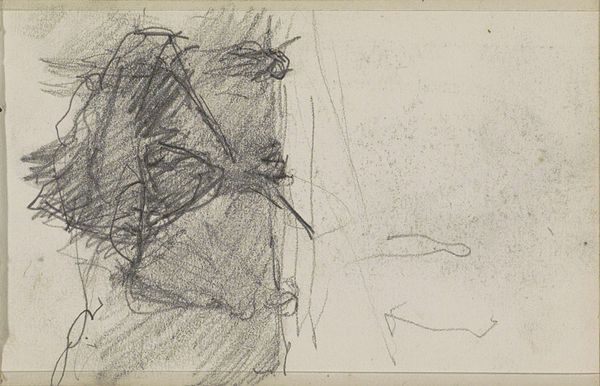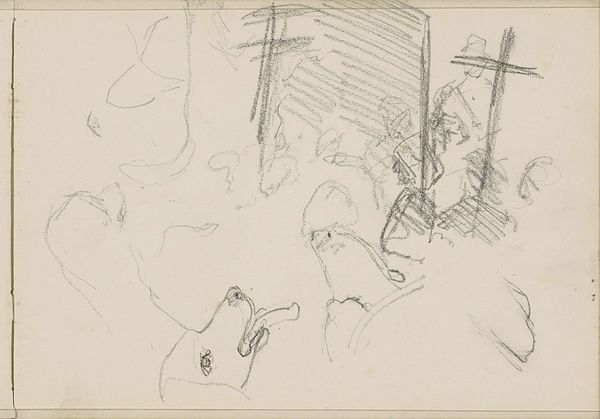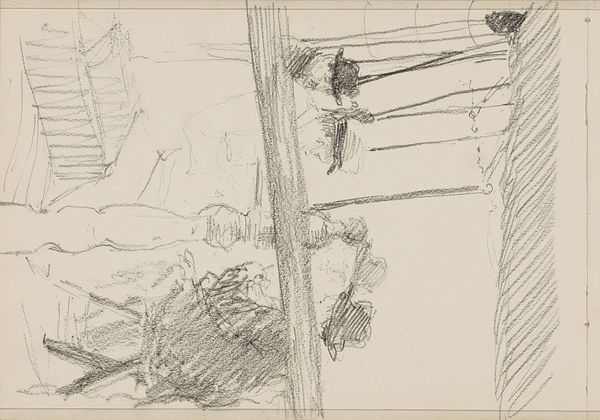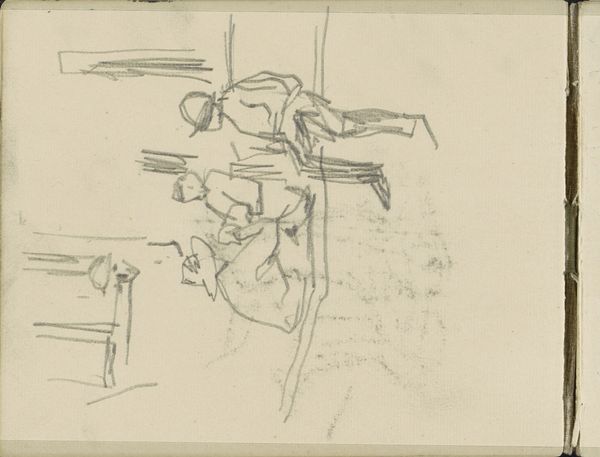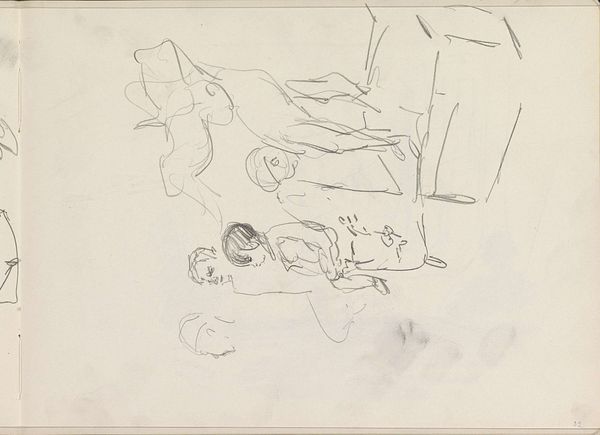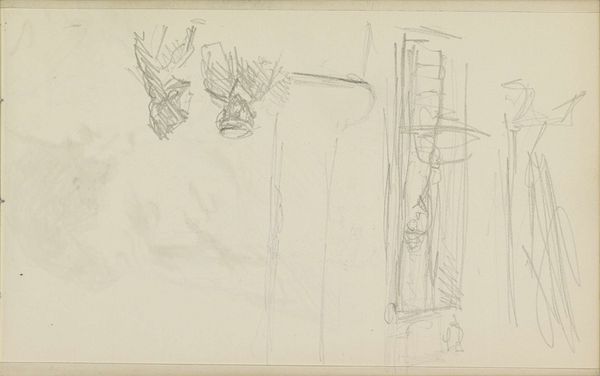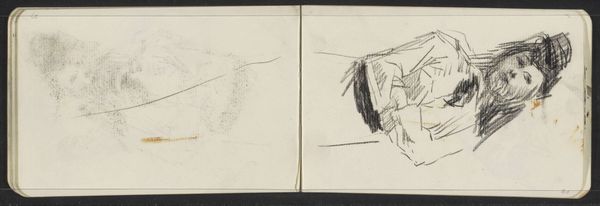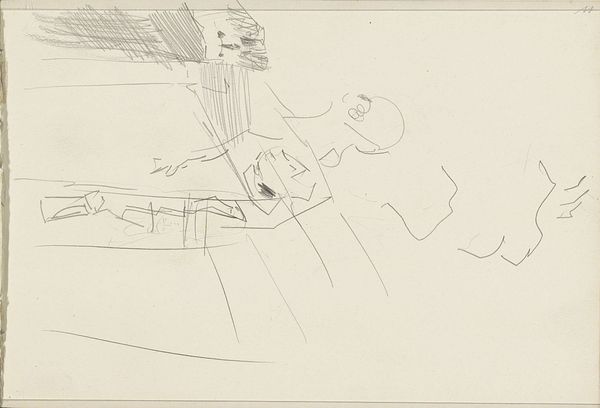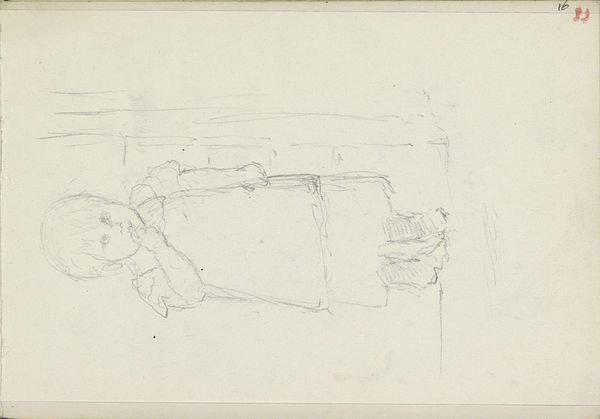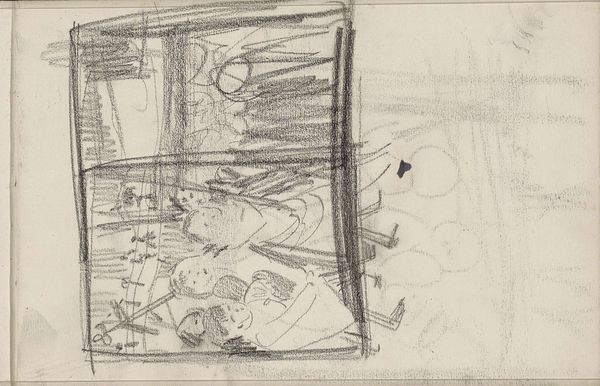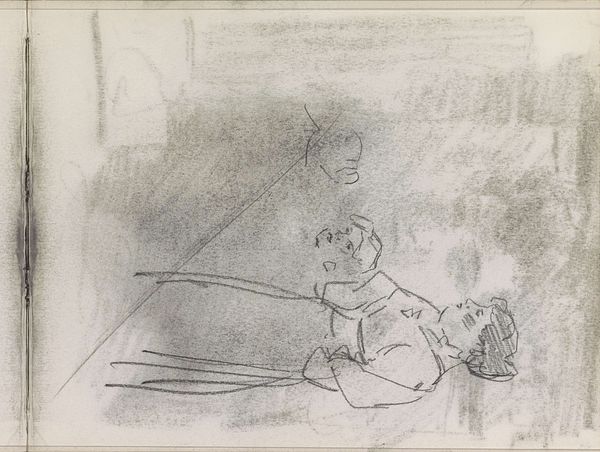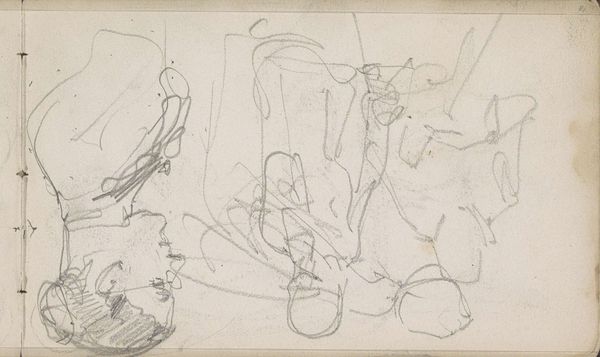
drawing, paper, pencil
#
drawing
#
impressionism
#
landscape
#
paper
#
pencil
#
realism
Copyright: Rijks Museum: Open Domain
Editor: Here we have Anton Mauve’s “Figuurstudies en vee bij een boom,” made sometime between 1848 and 1888 using pencil on paper. The composition feels very sparse. It seems like a preliminary sketch of figures and cattle within a landscape, but something about it also feels unfinished and unsettling. How do you interpret this work? Curator: The unfinished quality you observe speaks volumes. Mauve, associated with the Hague School, was deeply engaged with depicting rural life, but it's important to consider *whose* rural life. Consider the rapid urbanization occurring during this period. These sketches, while seemingly simple studies, operate within a larger narrative of industrialization and displacement. Do you think the “unfinished” quality romanticizes or critiques these changes? Editor: I hadn't thought about it like that. Perhaps it's romanticizing an idealized past. The sketchiness lends a sense of nostalgia, a longing for a simpler, pre-industrial existence. Curator: Precisely. The Realist and Impressionist movements were grappling with representing modernity, and here, we see Mauve negotiating the tensions between tradition and progress. Who does the romanticisation serve? What power structures are at play when painting the rural poor? Does his position, and those of his buyers, of privilege matter in your interpretation? Editor: That makes me consider it with new eyes. It is easy to get caught up in the art, without thinking of the socioeconomic implications behind it. The unfinished quality seems even more pointed, then, maybe less romantic, more ambivalent. Curator: I think ambivalence is key. The drawing serves as an incomplete record that invites us to question not just what is represented, but how and why. This approach pushes art history beyond aesthetics to examine the social fabric woven within the image. What is missing from the sketch that is crucial to understanding that socio-economic disparity? Editor: Thinking about it, the artist gives no detail of those sketching but details about the livestock; It gives a better perspective of how removed he is to those painting, and adds more weight to what this art means and symbolizes. Thank you, I’ve learned a lot. Curator: And I, from your fresh perspectives. These dialogues are vital in bridging the gap between past and present.
Comments
No comments
Be the first to comment and join the conversation on the ultimate creative platform.
